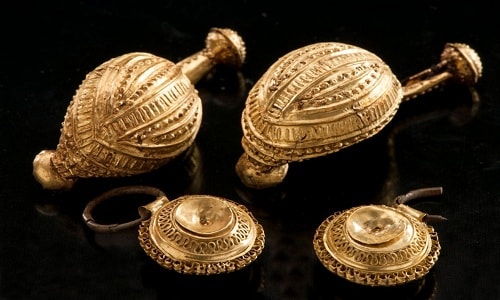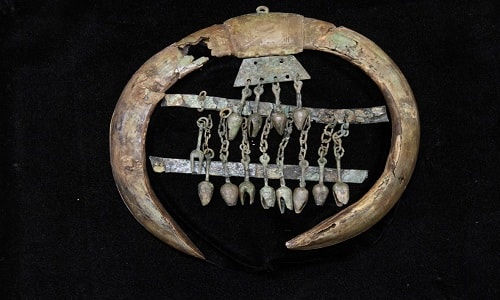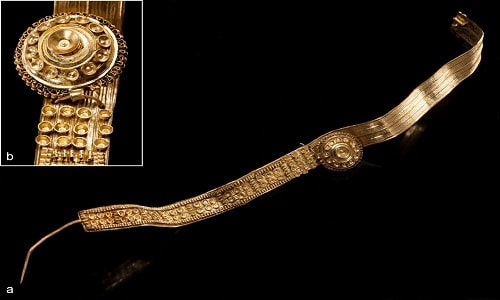2,600-year-old treasure reveals secrets in Celtic princess's tomb
Characteristics of the gold jewelry found in the grave suggest that the child's remains buried next to the woman were the daughter of the Celtic princess.
 |
| Two pairs of earrings on the skeletons of a woman believed to be a Celtic princess and a young girl. Photo: Dirk Krausse. |
The grave of a Celtic princess and her daughter in southern Germany dates back to 583 BC, or 2,600 years. The entire tomb has been moved to a research lab in Stuttgart so scientists can learn more about the burial site, according to International Business Times.
The tomb contained the remains of a woman wearing many gold, copper and amber jewelry. Half a meter away was the grave of a girl about 2-3 years old. Similarities in the gold earrings on the woman and the girl's bodies suggest a close relationship between them, scientists concluded in a report published in the journal Antiquities.
 |
| Bronze tulip pendant. Photo: Dirk Krausse. |
"The two pairs of gold earrings are very similar in style and decoration," said Dirk Krausse of the German Cultural Heritage Office in Baden-Wuerttemberg, lead author of the study. "Their shape and decoration suggest they are from the same period, possibly the work of the same goldsmith. They are very special, and we have no comparable specimens from other graves."
The burial mound dates back to the Iron Age, when Celts lived in what is now Germany and traded with the rest of Europe. The excavation site was transferred to the German Cultural Heritage Agency in 2011.
 |
| Another 28.5 cm long gold ornament found on the woman's body. Photo: Dirk Krausse. |
"We were quite surprised that the tomb was not robbed. It was near a small river or creek and the soil there was very wet, like a peat. The other tombs that had looted artifacts were in drier places. Most of the time there was water in the tomb chamber so it was not easy to steal things," Krausse said.
The low-oxygen, waterlogged conditions also limited the grave’s deterioration. Scientists took samples from the woman’s skeleton, but the girl’s remains did not provide enough data for DNA testing. Only the girl’s tooth enamel remained.
Right now, DNA sequencing technology isn’t advanced enough to work on the remains from the girl’s grave. “But in 10 to 20 years, maybe that technology will be available,” Krausse said.
According to VNE
| RELATED NEWS |
|---|

.jpg)






